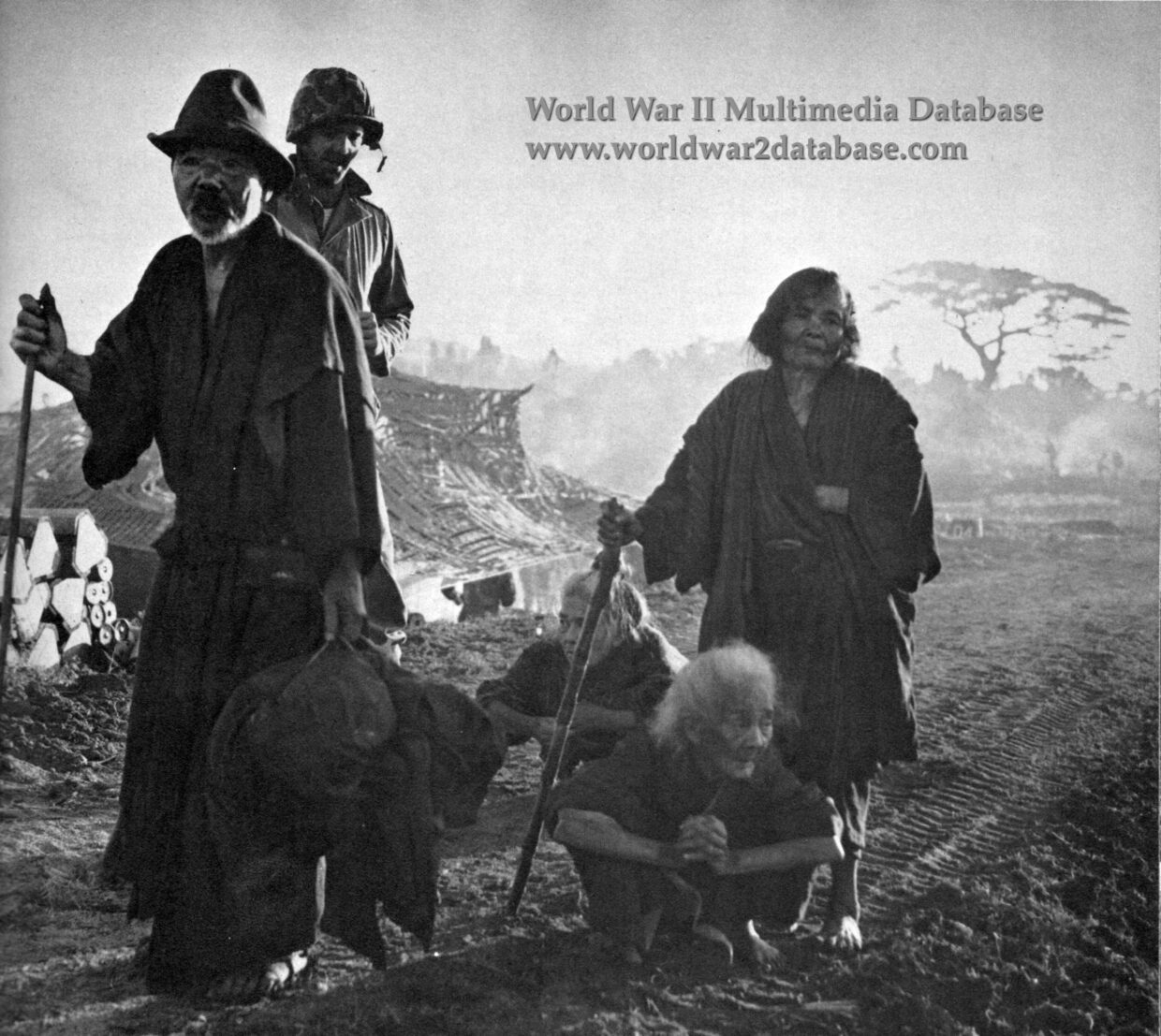| Private First Class John F. Cassinelli, Company B, 51st Military Police Battalion, First Marine Division, escorts elderly Okinawans on the beachhead to the rear. The 51st had one company assigned to each division in III Amphibious Corps to handle civilians, prisoners of war, traffic, and security. The Tenth Army was overwhelmed with 126,876 Okinawans during April, before the planned civil administration landed. The MPs were over-tasked, so civilians were escorted to an unguarded temporary facility on the beach. Lacking food, clothing, and medicine, many returned home, preventing or delaying reinforcements from reaching the front and congesting the roads. Guards were finally assigned to the camp, but cooks, MPs, medics, and especially translators were in short supply. In spite of these shortages, detachments that were originally designed to operate camps containing 10,000 civilians often found it necessary to care for as many as 20,000. The Okinawans were generally cooperative and docile. A large percentage were women, children, and the elderly. Company B worked with civilians at Sobe, Chibana, Gushikawa, and Ishimine-Kutoku. This Company moved 10,000 civilians and prisoners to Chibana. Their convoys were strafed and attacked by snipers. Extensive numbers of civilians were pushed out on the Katchin Peninsula and fenced off from friendly forces as an immediate temporary control. This company established outposts to pickup civilians and conducted foot patrols with military government teams forward of friendly lines to locate, capture, and protect civilians, records, and property. B Company guarded Island Command civilian inclosures at Shimobaru, Koza, Takabarn, and mibaru. They were relieved of duty in early May at these conpounds by military police from the 52d Military Police Battalion. Because of the stalemate at the Shuri lines the increase during May was gradual, the total number of civilians at the beginning of June being 144,331. But during the first three weeks of June, after the break-through on the Shuri line, the number again rose sharply until, at the conclusion of the fighting, the Okinawans under Military Government control totaled approximately 196,000. Estimates of 110,000 civilian casualties are not uncommon. | |
| Image Filename | wwii1335.jpg |
| Image Size | 2.21 MB |
| Image Dimensions | 3000 x 2678 |
| Photographer | Unknown |
| Photographer Title | |
| Caption Author | Jason McDonald |
| Date Photographed | April 01, 1945 |
| Location | |
| City | Hagushi |
| State or Province | Okinawa |
| Country | Japan |
| Archive | United States Marine Corps |
| Record Number | |
| Status | Caption ©2007, ©2024 MFA Productions LLC Image in the Public Domain |

Author of the World War II Multimedia Database

